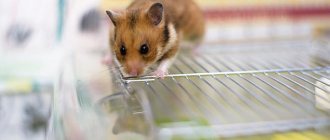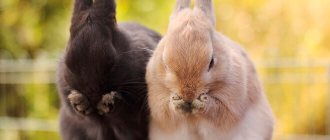How long do budgies live?
Budgerigars are noisy and chatty birds that can easily memorize various words and phrases and then repeat them many times. These little parrots are extremely friendly and easy to tame. Although they are sometimes difficult to understand, they are also quite capable of imitating human speech.
The lifespan of these birds as pets ranges from 7 to 15 years, with some living up to 20 years.
How long do average parrots live at home?
Scientists have long noticed that the average life expectancy of a parrot depends on the size of the bird. Medium-sized birds can live a third of a person's life, or even more. Let's watch the gray and cockatiel.
Jacos are distinguished by good onomatopoeic abilities and excellent intellectual abilities. They can remember and pronounce about 1,500 words and sentences. These birds are easy to train, sociable, and can distinguish any objects and figures by their name. But they also require increased attention, patience and care. On average, they can live up to 25-50 years.
Beautiful cockatiels with a tuft on their heads and pink cheeks live 15-18 years in the wild, and 25-30 years with home care.
The necklace species of birds is often classified as medium-sized parrots. These are calm, intelligent and obedient birds that rarely show aggression and only in exceptional cases. How long does the necklace parrot live? These birds are also called ringed or Kramer's parrots and there are 13 species of them, each of which has its own life expectancy. But on average it is 25-30 years, subject to good maintenance, care and love for the bird.
How long do lovebirds live?
Lovebirds make wonderful pets. They are mainly known for their affectionate behavior towards their "chosen partner". They love nothing more than a "date" with their buddy (who may be their owner or another bird). These little parrots are truly devoted to their owners. However, it may cause jealousy towards other pets (including other birds, cats and dogs).
The maximum lifespan of lovebirds at home is 25 years, and the average varies between 15-20 years.
Factors influencing life expectancy
When considering the question of how many years budgerigars live with proper care at home, we can note several factors that influence their life span:
- Genetics. Unsuccessfully carried out selections lead to the development of various congenital diseases. They act as a reason for shortening the life of budgerigars living at home. Unscrupulous breeders and owners of birds who do not have sufficient experience do not delve into pedigrees when breeding. This, in turn, leads to the fact that the duration of existence is significantly reduced. The creation of closely related ties is the reason for the development of hidden forms of chronic diseases. If death occurs due to the influence of a genetic factor, then a cheerful and healthy, at first glance, feathered creature begins to quickly lose its vitality and dies.
- Nutrition. The physiological feature of wavy creatures is that these creatures have a tendency to develop malignant neoplasms. The cause of this problem is the presence of poor-quality and unbalanced nutrition, which leads to disruption of the functioning of the gastrointestinal tract. Eating too much food leads to excess weight. Obesity contributes to a visible decrease in the parrot's lifespan; it lives much shorter.
- Cell. At home, budgies can live in a cage for up to 15 years. It is important to comply with all necessary conditions of detention. It is preferable to choose a room with good lighting for the cage. The room temperature must be maintained at a constant level. If you maintain external temperature balance, your pet will feel comfortable. The cage requires systematic care. It must be cleansed. You must remember to bathe your parrot. Water and food are updated periodically. I would like to pay special attention to the quality of testing of products and water.
- Water. The lifespan of budgies will increase if the water is changed regularly. Its optimal temperature is 15-17 degrees. Carefully monitor your pet's availability of drinking fluids. In hot weather, increase your drinking volume.
- Lighting and care. The length of daylight hours should correspond as much as possible to natural conditions. If the time spent in the light is short, then the life expectancy of budgerigars is reduced. The consequences of illiterate lighting are slower growth, development of rickets, disruption of metabolic processes, etc. The lifespan of budgies depends on this factor.
- Regular flights. For a feathered friend living at home, it is important to take walks every day. This lifestyle is the key to excellent health and long life expectancy. Promote the ability to fly regularly.
- Stress. The lifespan of budgerigars largely depends on the amount of stress factors affecting them. It is important to remember to pay due attention to the psychological well-being of your feathered pet. If the owner constantly communicates with his inhabitant, shares emotions, spends time with him, then he will soon get used to the new conditions of home living and will calmly tolerate various irritants - guests, noises, other pets. A bird can handle all bad weather when it trusts its owner and has close, emotional contact with him. After all, loneliness and boredom make parrots feel unnecessary, and their immunity deteriorates.
How long do macaws live?
Macaws are the most colorful parrots, originally found in Central and South America. Because they are large parrots, they also have a long lifespan. If a young macaw arrives in your home, it will likely outlive you, as healthy individuals can reach 60-80 years of age.
Even a small species, the blue-fronted lesser macaw, can live up to 60 years. If you want to spend your life with a colorful, feathered friend, the macaw would be a good choice.
What affects life expectancy
Here a lot depends on the pet owner. If a person has provided the bird with all the necessary conditions for a comfortable life and protected it from stress, then it will delight him for many years. Otherwise, the parrot will repeat taking into account its wild brother. Let's consider all the factors that both directly and indirectly affect the life expectancy of a budgerigar.
Cell
The birdcage must be spacious. In cramped conditions, parrots begin to experience stress and, as a result, get sick.
The feeder and drinker must be positioned in such a way as to prevent contact of food and water with excrement. The optimal place for a cage is the sunny side of a house or apartment, where there are no drafts.
Housing for a pet should not be located near heating devices or household appliances that emit strong heat.
You need to clean the cage at least once a week. The abundance of feathers, fluff, and at the same time dirt is a favorable environment for the development of harmful microorganisms. If the bird starts sneezing, then this is a sure sign to start cleaning.
Health
This factor directly affects the life expectancy of the pet. It is necessary to regularly check poultry for the presence of parasitic pests and diseases. Healthy individuals are characterized by increased activity. During the day, they show interest in what is happening around them, rather than sitting sleepy in the corner of the cage.
If the parrot has stopped singing, communicating with members of the household, or has suspicious growths on its body, then this is a reason to contact a veterinarian. Poor appetite and excessively tearful eyes also indicate a pet’s painful condition.
Stress
Budgerigars need to be protected from psychological shocks. If, in addition to the bird, there are other pets in the house that show increased interest in exotic birds, then such situations must be stopped. What saves you from a curious cat is the high location of the cage (cabinets, mezzanines, pendants, etc.), where the parrot will feel safer.
Another strong source of stress is household appliances. A nearby TV or washing machine can seriously frighten your pet. If the bird is in the kitchen, then under no circumstances should you place the cage on a constantly vibrating refrigerator or next to the stove.
Communication
Under natural conditions, parrots live in colonies and have no shortage of society. But in the apartment the pet begins to feel sad due to lack of attention. to him , put him in your arms so that he doesn’t feel lonely.
A mirror in the cage will partly brighten up your pet's loneliness. It should approximately correspond to the dimensions of the bird, thereby creating the effect of the presence of a fellow bird. Toys, such as bells or bright beads, also come in handy.
Nutrition
The main diet of budgies is millet. There is plenty of it in specialized food.
It is very important to dilute the diet with fruits and vegetables: small pieces of apples or carrots. During the molting period, it is necessary to add protein elements to the food, as well as chalk.
In its natural environment, the bird feeds on sesame, hemp seeds, sunflower seeds and meadow grasses.
The favorite treat of budgies is small grass grains. They swallow them whole, after which they are partially digested in the crop and then sent to the stomach.
The presence of any foreign particles of dirt in food is unacceptable. The bird's esophagus is finicky, and sharp or large pieces can injure it. The food must be fresh. Even a gram of mold can cause severe poisoning.
The average individual consumes about 1 tablespoon of a specialized mixture per day. During the period of growing up and reproduction, the dose is increased by 1.5-2 times. Vitamins should be treated with extreme caution. Parrots need groups A and D, but their excess leads to prolonged illnesses and sometimes to the death of the pet.
Birds should not be overfed : excess food is worse than hunger. Obesity is very difficult to treat, and the digestive system can ultimately be ruined. It is better to slightly underfeed the animal than to overfeed it.
It is also useful to read: How to germinate oats for a parrot
How long do cockatoos live?
Cockatoos are native to Australia, New Zealand, Indonesia and surrounding islands. The largest individuals can weigh more than one kilogram, while the smallest member of the family, the cockatiel, weighs only about 90 grams.
Due to the difference in cockatoo size, life expectancy varies greatly. Large individuals can live 60 years or more.
How long do cockatiels live?
Cockatiels are intelligent, social and sociable birds from the cockatoo family. These elegant and exotic parrots are famous for their colorful plumage, high crest and long, pointed tail. Cockatiels are small birds that have a reputation for being gentle and docile pets. They are very affectionate and often love to be held.
The lifespan of cockatiels as pets is 15-20 years. Some individuals were able to live for about 30 years, although this is rare.
How many years do parrots live?
Probably, every person, before getting a parrot, spends a lot of time studying information about these birds: feeding, living conditions, care, etc. Not least on the list of these subtleties is the question of how many years parrots live .
The lifespan of exotic parrots depends, first of all, on their species. Small parrots, for example, budgerigars, live approximately 10-15 years. Medium-sized birds will please their owners longer - their existence after birth lasts from 20 to 30 years. The real life span of large parrots is not precisely determined: some sources indicate that they live from 50 to 120 years, others limit this figure to sixty years.
How long a parrot lives depends not only on its species. A varied and balanced diet, optimal temperature and light conditions throughout the year (the use of special ultraviolet lamps that produce vitamin D in the birds' bodies), a spacious cage equipped with toys for parrots - all this also plays an important role in determining the life expectancy of your pet. The health and longevity of a parrot is also affected by its emotional comfort: birds can get sick from loneliness, boredom and lack of attention; a caring owner must worry about the leisure time of his pet, which, like any pet, wants attention.
There are many opinions about the type of habitat that affects how long a parrot lives . Many are confident that the natural habitat of these birds is less suitable than life in captivity, because in the wild they more often die from numerous predators, adverse weather conditions or hunger. Proponents of the opposite point of view have no less compelling arguments: people are not always able to provide the necessary variety of food or create a comfortable environment for parrots to live a full life, which leads to the development of various diseases in them, the presence of which leads to premature death. It is worth noting that many species of small parrots currently living with people have been bred artificially, so living in captivity is still preferable for them. As a result, it turns out that the difference between the lifespan of parrots in nature and at home can differ quite significantly.
So, let’s look at how many years parrots of popular “popular” species live:
| How many years does a budgerigar live ? The budgerigar is the most common representative of exotic birds in Russian families. This bird is talkative, sometimes they manage to communicate with people. Of course, the owners of these pets are concerned about the approximate life span of their budgerigars. Scientists have found that in its natural habitat with its dangers, the budgerigar lives only 6-8 years. With regard to the residence of “wavy” people, things are different. At home (with proper care and nutrition), a budgie lives for about 10-15 years. There are also long-lived budgerigars - some individuals live up to 20 years, the record for this parameter belongs to the 21-year-old "budgerigar". | |
| How many years do Corella parrots live Corellas are very bright, quite cheerful and very “loud” parrots, difficult to tame and difficult to teach individual words. The average lifespan of these beautiful birds is 15-18 years. | |
| How many years do lovebirds live? Lovebirds got their name because of the unusually strong attachment of the male and female to each other. These birds are so faithful to their partners that often when one parrot in a pair dies, the second may die of melancholy. Sometimes the opposite happens, the birds part very easily and go to another partner. But to the question “how long do lovebirds live?” The answer, alas, is not very pleasant - the average lifespan of these birds is approximately 10-15 years. | |
| How many years does a Gray live ? Grays are the most common medium-sized parrots kept at home in Russia. Different sources contain different data on how long Grays live. But, after checking information from a certain amount of literature, we can say that their average lifespan is 50-60 years. It is worth noting that from unconfirmed sources it is also known about centenarians who lived up to 93 years. Grays boast relatively high intelligence, making them particularly susceptible to lack of attention. Lack of communication negatively affects the health of the bird; the parrot may begin to pluck itself. | |
| How many years do macaws live ? Macaws are large, relatively easy to train, terribly expensive and therefore rare parrots in our country. They live on average 30-40 years, but there is also information about individuals who lived more than 50. Among the documented data on how long macaws live, the record holder is the resident of the Antwerp Zoo - the Kea parrot, who just barely lived to be 50 years old. | |
| How many years does a Cockatoo live? If you believe the summary data on how long a Cockatoo lives, the life of these large parrots in captivity averages about 30-40 years. The longest-lived individual was officially considered to be the Moluccan Cockatoo “King Tut”, who died at 69 years old. | |
| How many years does the necklace parrot live ? Another prominent representative of the parrot order is the necklace parrot. These graceful and graceful birds are distinguished by their intelligence, curiosity and unpretentiousness to their living conditions. Parrots are medium-sized birds that can live 20 to 30 years in captivity. |
Remember, care, care and attention are what will allow your parrot to live a happy and long life. Or maybe he will become a long-lived record holder among his relatives.
How long do Amazons live?
Amazons are smaller parrots than macaws or cockatoos, but they are still large enough to be lifelong companions. Most Amazons are the size of a pigeon, and many are very bright. These parrots can be very intelligent, talkative and playful.
The average life expectancy of Amazons is between 50 and 70 years. Therefore, you must be prepared to accept this bird into your home for many years.
Ruffled parrot
This species of parrot is also called the Indian ringed parrot. They have beautiful green plumage. There is a narrow strip around the neck, reminiscent of a necklace, which is how the parrot got its name.
Distributed in Africa and South Asia. This is a medium-sized parrot, body length 40-42 cm, body weight 110-140 grams.
The average lifespan of a necklace parrot is about 10-20 years. Some individuals can live up to 30 years.
Read more on the topic “How long does a necklace parrot live?”
Interestingly, by the presence of a characteristic stripe around the neck, you can determine the sex of the necklace parrot. Only males have it, females do not.
How long do Grays live?
Gray parrots, also known as African gray parrots, are about the same size as Amazon parrots and they have the same lifespan. With good nutrition and care, the African gray parrot will be your companion for 50-60 years. Some individuals are known to live up to 80 years.
These gentle birds are considered by many experts to be the most intelligent of the parrots. If you want a parrot that can talk to you, the Gray may be a good choice.
Didn't find what you were looking for? Use the site search form
Lovebirds
Lovebirds are native to Africa and Madagascar. These are small birds, only 10-17 cm long, weighing 40-60 grams. They have bright plumage, mostly green. The head, chest and rump are usually of a different color, yellow, red, pink and other colors. They live in large flocks. Nests are made in tree hollows.
The average lifespan of a lovebird is about 10-15 years. Some individuals can live up to 20 years.
There is a legend that if one lovebird dies, then the second one may soon die from melancholy. In fact, lovebirds choose their mate for the rest of their lives and become very attached to each other. But after the death of one individual, the second bird yearns for some time, and then can create a pair again.
Read more on the topic “How long do lovebirds live in pairs and without a pair?”
Macaw
Macaws are very large, body length reaches 100 cm, weight up to 2 kilograms. The plumage is very bright and colorful. In nature they live in large flocks of up to 100 individuals.
Very noisy but artistic birds. They reproduce a variety of sounds well. They dance very funny to the music and nod their heads to the beat. Macaws are very touchy. When stressed or frightened, they may bite painfully. It can be tamed by hand if you take a young bird. They quickly become attached to the owner.
Macaws are prized in the market. The price of some types of macaws reaches 2 million rubles.
The average lifespan of a macaw parrot is about 50 years. Some individuals can live up to 80 years.
Read more on the topic “How long do macaws live?”
Jaco
The gray parrot is common in West Africa. Its habitat coincides with the distribution area of the oil palm, the fruits of which it feeds on in the wild. It prefers to settle in dense forests and forest thickets.
Gray parrots are very smart birds. The world's smartest parrot of this species, named Alex, was listed in the Guinness Book of Records. Not only was he able to learn more than 80 words, but he was also able to distinguish the shape, color and size of objects. He could also answer some questions and express his desires.
The average lifespan of a gray parrot is about 30 years. Some individuals can live up to 50 years.
Rosella
The Rosella parrot lives in Australia and the island of Tasmania. In nature, they settle in close proximity to humans. It has bright multi-colored plumage. Body length reaches 40 cm, body weight from 80 to 130 grams.
They quickly get used to people and are well tamed. They are able to learn only a few words, but they remember and reproduce melodies well.
The average lifespan of a Rosella parrot is about 10-20 years. Some individuals can live up to 30 years.











